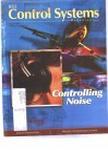版权所有:内蒙古大学图书馆 技术提供:维普资讯• 智图
内蒙古自治区呼和浩特市赛罕区大学西街235号 邮编: 010021

作者机构:Robotics and Automation Laboratory Center for Advanced Computer Studies University of Southwestern Louisiana Lafayette LA United States
出 版 物:《IEEE Control Systems》 (IEEE Control Syst.)
年 卷 期:1997年第17卷第6期
页 面:48-64页
学科分类:0808[工学-电气工程] 0809[工学-电子科学与技术(可授工学、理学学位)] 08[工学] 0802[工学-机械工程] 0701[理学-数学] 0811[工学-控制科学与工程] 0812[工学-计算机科学与技术(可授工学、理学学位)]
基 金:National Science Foundation, NSF, (BES-9506771, BES-9712565) National Science Foundation, NSF
主 题:Underwater vehicles Unmanned aerial vehicles Remotely operated vehicles Land vehicles Mobile robots Communication system control Marine vehicles Control systems Humans Road vehicles
摘 要:Autonomous underwater vehicles (AUVs) share common control problems with other air, land, and water unmanned vehicles. In addition to requiring high-dimensional and computationally intensive sensory data for real-time mission execution, power and communication limitations in an underwater environment make it more difficult to develop a control architecture for an AUV. In this article, the four types of control architectures being used for AUVs (hierarchical, heterarchical, subsumption, and hybrid architecture) are reviewed. A summary of 25 existing AUVs and a review of 11 AUV control architecture systems present a flavor of the state of the art in AUV technology. A new sensor-based embedded AUV control system architecture is also described and its implementation is discussed.